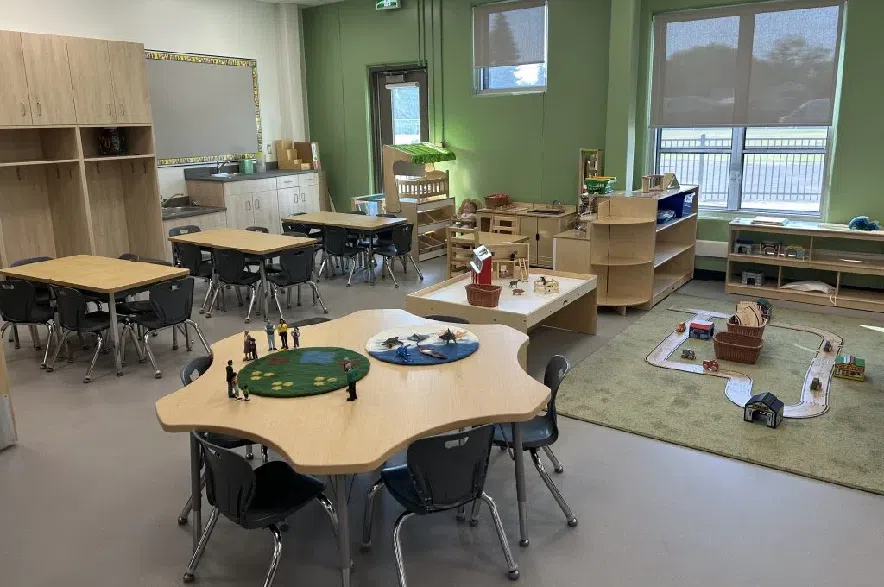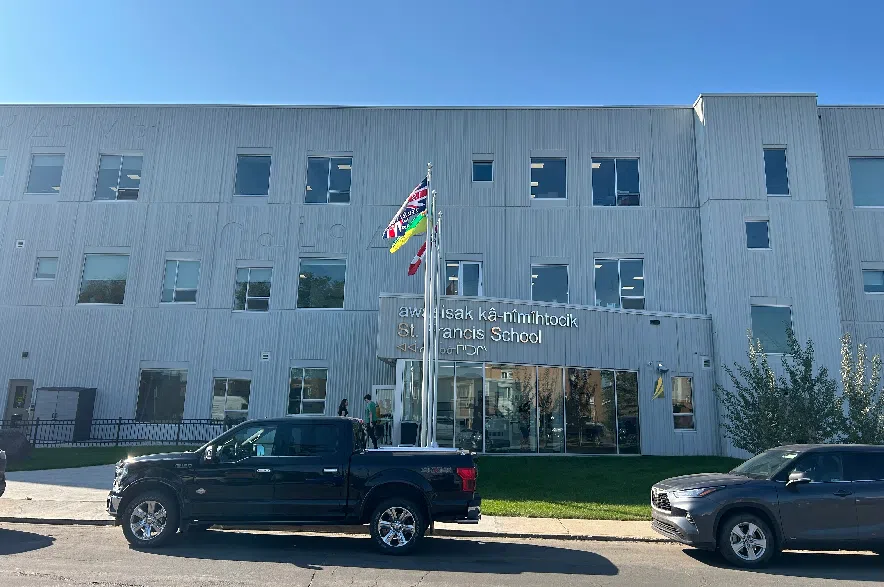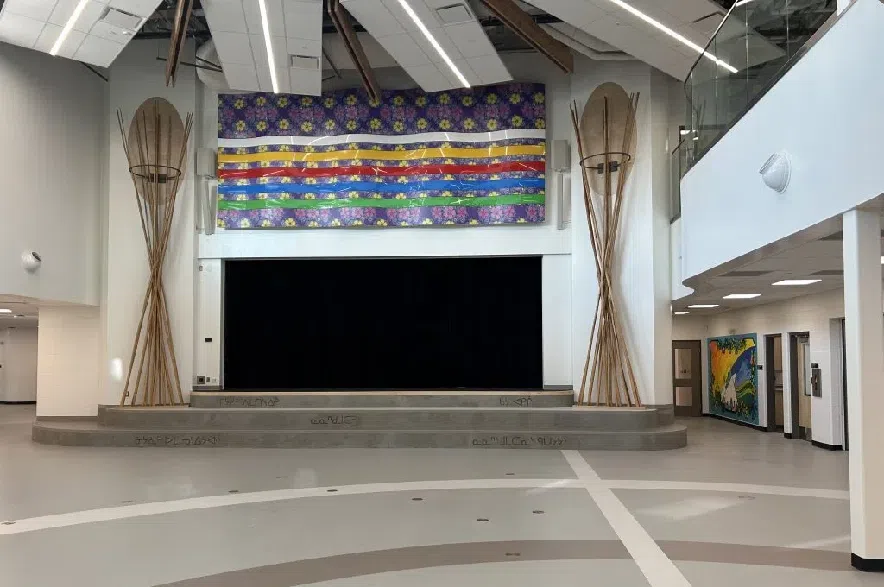School is back in session today, and it’s a special day for Saskatoon’s Catholic school division.
After two years of construction, awâsisak kâ-nîmîhtocik St. Francis School, an English/Cree bilingual school, is opening up in Saskatoon’s Haultain neighbourhood.
According to the school division, the name means “children who dance” and reflects the nurturing of children’s spirits, their connection to ancestors and their journey into the future. “The name honours traditional teachings and cultural knowledge passed down through the generations,” it said.
Read more:
- Tips for parents as the cost of back-to-school supplies rises
- Construction begins on long-awaited central Saskatoon school
- Privacy report shines light on 2024 Sask. school division cyberattack
“I feel blessed to be a part of this project. This was something that started well over a decade ago,” said Kelly Cardinal, superintendent of education with Saskatoon Catholic Schools.

A Kindergarten classroom inside at awâsisak kâ-nîmîhtocik St. Francis School. (Shane Clausing/650 CKOM)
“I can already feel the buzz from the children who will ride up on the bus and be able to see their school for the very first time, aside from renderings on a picture or on a whiteboard. It’s truly exciting to be part of the project.”
The school will be home to 600 Kindergarten to Grade 9 students when it opens its doors on Tuesday, and lessons will be taught in both English and Cree throughout the day.
Cardinal said the school was designed so that classrooms of the same grade will be able to collaborate with each other.
“There’s a lot of design elements and spaces you’ll see in this building that aren’t in other elementary schools,” said Cardinal.
“Not only are they taking in Saskatchewan’s curriculum, the program plan focuses on wellness, learning and community, on land-based learning and Indigenous themes. The way that they’ll be taught is going to be unique in that the teachers will work together in a pod-style learning, so gone are the days of when a student goes in and sits in a perfect little row and has the teacher at the front. You now have a community of teachers; three of them working together to teach you in different ways.”
Cardinal said the teaching style will allow instructors to be responsive to different learning styles and offer them flexibility in what they are able to teach.
“I think we’ll see an increase in engagement in student learning, because they’ll have that opportunity to cross pollinate with different subjects that teachers are passionate about, so I’m just excited for them to experience learning components that are an added value to what a normal classroom would typically get,” she said.

The elementary school library located on the second floor of The main stage area of awâsisak kâ-nîmîhtocik St. Francis School. (Shane Clausing/650 CKOM)
The school will also feature various specific classrooms that will be used by elders to share stories, a lab where kids will be able to learn about animals and even how to butcher animals like deer, elk or moose, and a media lab focused on teaching technology.
The exterior of the building itself was designed to mimic the northern lights.
Cardinal said having a Cree and Catholic elementary school brought together can also advance reconciliation.
“The school itself is a teaching tool. Wen we talk about reconciliation, relationship is an integral part of that as is healing and that that dialog between between groups,” Cardinal said.
“We all know and are well aware of the history of the Catholic Church and Indigenous peoples. Part of this school is to come together to provide space and decolonize and make space where there wasn’t before.”
Cardinal said students at the school will still attend mass and participate in daily prayer, but students will also get an opportunity to participate in Indigenous ceremonies including smudging and feasts.
“It’s about creating the opportunity for culture and identity and worldviews to feel valued and understood and acknowledged, but also not shying away from that history and actually being able to talk about it together and from those conversations move forward, be it with students or with staff or with the board and with the public and the elders and the parents,” Cardinal explained.












